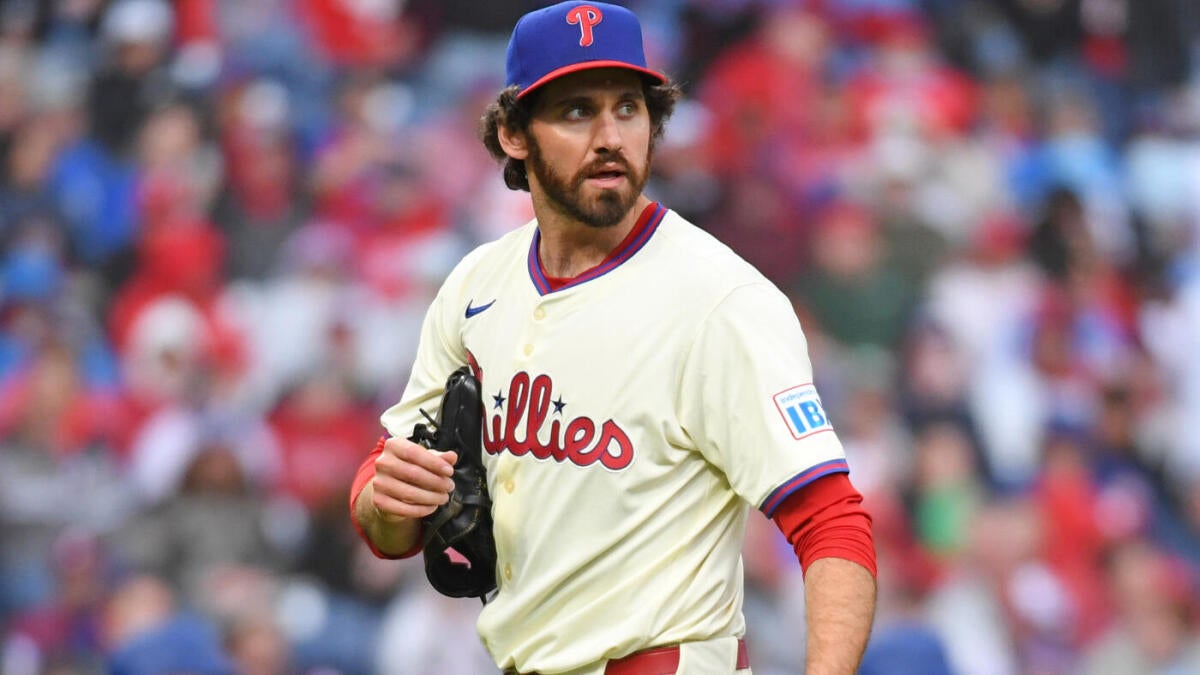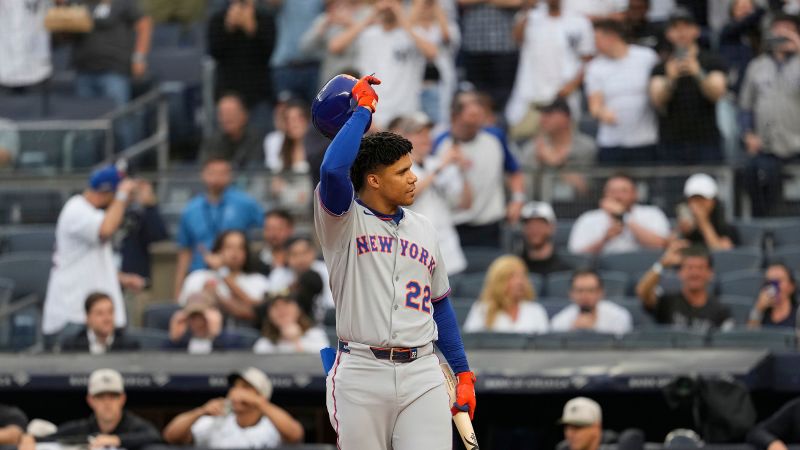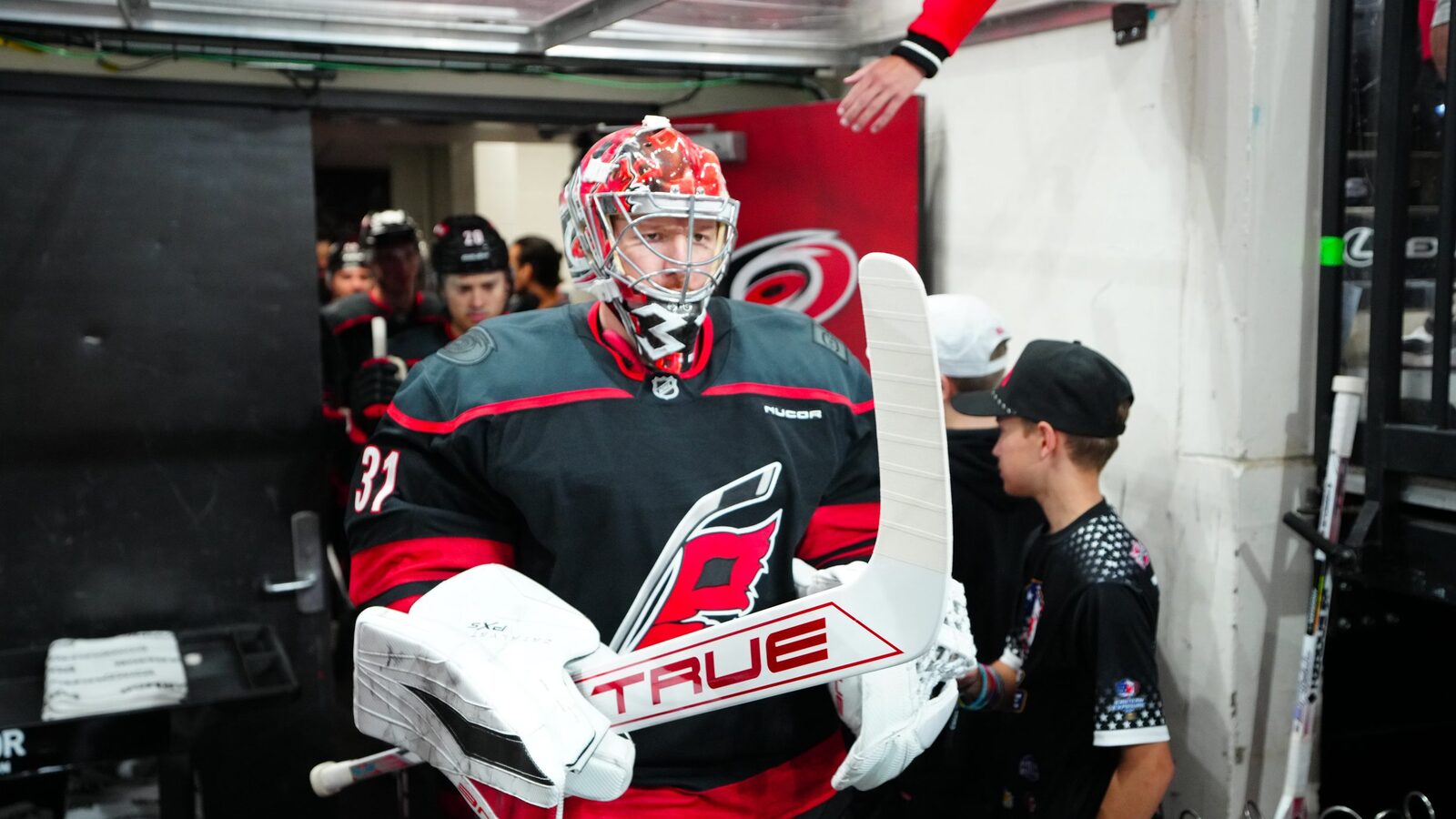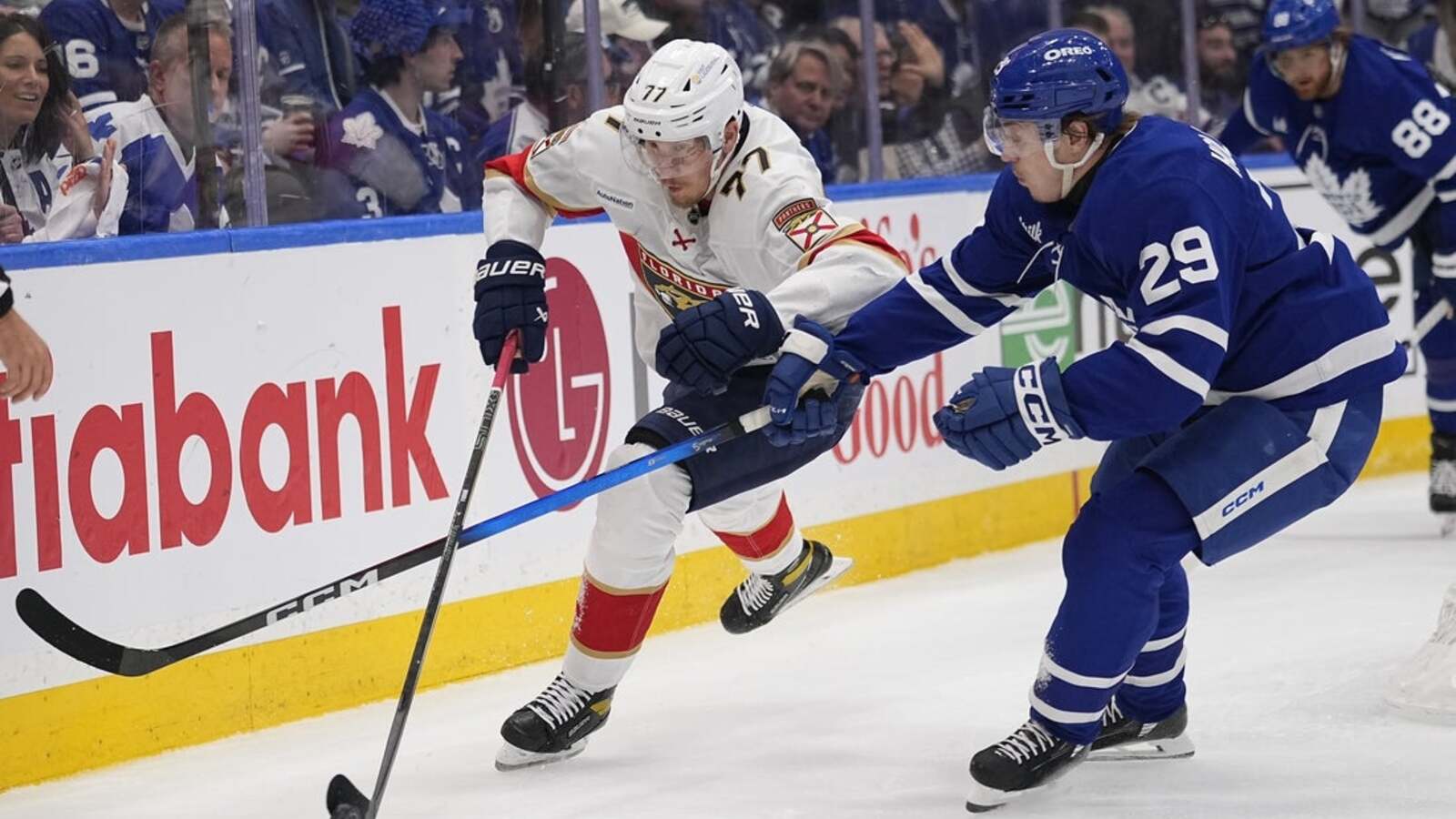
This article is a near-weekly feature because closer roles are constantly in flux.
But usually they change because of performance or injury. They don’t often change for the reason that the Phillies closer role is changing, which is that the top guy in the pecking order, Jose Alvarado, failed a PED test. He’s suspended for 80 regular season games and also the postseason. Fortunately, the Phillies had already begun to integrate a closer alternative, giving them a righty/lefty tandem at the end of games.
Who is that alternative, and will he find himself in a different righty/lefty tandem? Let’s look at the 10 closer scenarios most in flux right now.
Note: “Pecking order” refers to rosterability in Fantasy and not necessarily who’s first in line for saves (though it’s usually one and the same).
Jordan Romano had already begun to encroach on Alvarado’s save chances at the time of the suspension, recording two of the Phillies’ past three, with Alvarado working the eighth in each instance. So these new save chances that Romano is about to receive are at least partly merited, which I find reassuring. Granted, we’re reading a lot into small samples here. He’s still sporting a 7.27 ERA overall. But he’s riding an eight-appearance scoreless streak, allowing just four baserunners while striking out 11. The last of those eight appearances was the Phillies’ first save chance sans Alvarado Sunday. Romano struck out the side in a perfect ninth while left-hander Matt Strahm struck out two in a perfect eighth.
And that’s how I expect the final two innings to play out most days, emphasis on the most. One thing we’ve learned during Rob Thomson’s three-plus years managing the Phillies is that he’s not the most committed to bullpen roles, which is why Alvarado never had his feet firmly planted as the closer. I presume, then, that the order in which he deploys Romano and Strahm will sometimes flip according to matchups, perhaps enough for Strahm to get 8-12 saves the rest of the way.
In a surprise move, manager Craig Counsell called on right-hander Daniel Palencia to convert a save Monday only to announce after the game that Porter Hodge, who appeared to have the inside track on the closer gig, was headed to the IL with an oblique injury. Palencia blew the save chance, by the way, allowing a walk-off, two-run triple to Jesus Sanchez, so I’m guessing it won’t be him who steps into the role next.
The one who makes the most sense, honestly, is Ryan Pressly, who never officially lost the job in the first place. As I wrote last week, the Cubs wanted him pitching on a more consistent schedule as he worked through some mechanical issues, which necessitated pulling him from closer duties since save chances don’t come about so regularly. But he’s had five straight scoreless appearances since the demotion, putting together a 14 percent swinging-strike rate compared to 6 percent previously. It isn’t much to go on, but I don’t see much of an alternative for the Cubs — who, again, have talked like they eventually want to get Pressly back in the role.
A dark horse would be Brad Keller, the former pitch-to-contact starter who has been throwing harder and missing bats at a decent clip out of the bullpen. He’s begun to see more work in high-leverage spots, too, so it’s at least a name to consider.
This one is pretty straightforward, actually. Justin Martinez is set to embark on a rehab assignment, having missed less than three weeks with shoulder inflammation, and as long as his velocity checks out (so far, so good in side sessions), he’ll be activated by this weekend. Presumably, then, he’ll step back into the closer role right away because no one has contested it in his absence. Kevin Ginkel, who was newly recovered from shoulder inflammation himself, seemed to be manager Torey Lovullo’s first choice, but he so thoroughly blew a save May 9 that he hasn’t gotten a chance since. Shelby Miller has handled each of the team’s past three, but not so convincingly, allowing seven total baserunners during that time.
Another week of usage has only reinforced the idea that new manager Don Kelly, who took over for Derek Shelton on May 8, prefers Dennis Santana in the ninth inning to David Bednar. During that week, Santana made just one appearance, but it was in the ninth with a four-run lead after Bednar had worked a scoreless eighth. Bednar was also tasked with the eighth inning of a tie game Monday, but he promptly blew the tie and took the loss, which won’t get him in Kelly’s good graces. Since Kelly took over, four of Bednar’s five appearances have come in the eighth inning, and the only time he worked the ninth was after Santana had pitched on three consecutive days. Whether Santana is good enough to hold up in the closer role is fair to wonder and highly in doubt given his low strikeout rate, but he’s clearly the guy right now.
Raisel Iglesias has escaped blame for the Braves‘ lackluster start, at least nationally, because so much of the focus has been on the offense, but he’s been quite bad so far. The six home runs are two more than he allowed all of last year, and there have been too many hits of all stripes. It’s not so obvious why either. The slider has been getting hit the hardest, but he’s been fading it in recent years anyway, relying more on his fastball and changeup. The velocity is down slightly on everything, but only slightly. The Braves seem content to ride it out for now, conceding to his experience, and it wouldn’t be the first rough patch he’s endured in a lengthy closer career. But everyone runs out of leash at some point.
Part of the reason why the Braves are giving him so much benefit of the doubt may be that they don’t have an obvious place to turn next. Right-hander Pierce Johnson got a spot save when Iglesias was unavailable last week and has strong numbers overall. I suspect that he and left-hander Dylan Lee could split save chances in Iglesias’ stead. Daysbel Hernandez has been more of the eighth-inning guy, but his numbers aren’t as impressive. There’s also Craig Kimbrel lurking at Triple-A, but if the Braves haven’t seen fit to call him up yet, they surely wouldn’t install him as closer right away. For now, tough, the role remains Iglesias’.
I’m keeping Devin Williams at the top of the pecking order because surely even the Yankees realize that his upside in the closer role is second to none (or maybe one, Emmanuel Clase), but boy, Luke Weaver is making it hard for them to go back. He entered play Tuesday with a 0.44 ERA, 0.59 WHIP and 9.7 K/9, and there’s simply no improving on that, at least not the first two numbers. For what it’s worth, Williams has been great since being relegated to a lower-leverage role, allowing just two hits while notching 12 strikeouts in eight innings. The ERA during that time is 3.38 because of one outing that went awry, but the other eight appearances have been near flawless. I think he just needs Weaver to look a little more human before manager Aaron Boone can justify switching back.
A week ago, I floated the idea that Ryan Walker might be on the verge of losing the closer role to Camilo Doval, but that no longer seems imminent. One bad outing could bring us back there, of course, but over the past week, Walker has had three scoreless appearances, all in the ninth and once for a save. Doval, meanwhile, continues to impress in setup duties, and I’m sure I wouldn’t be the first to tell you that he has a longer history of closing than Walker does. While Doval has five saves this year, mostly because the Giants kept having save chances on days when Walker was unavailable earlier this season, Walker is up to eight and has each of the Giants’ last three. I wouldn’t say he’s safe right now, but he’s safer than he appeared a week ago.
The Dodgers came into this season with five experienced and viable closer candidates. They’re down to one, Tanner Scott, after Kirby Yates joined Blake Treinen, Evan Phillips and Michael Kopech on the IL. So you’d assume that Scott would get every save chance moving forward, right? We don’t know exactly because Scott and Yates last pitched on the same day, Saturday. Even then, though, their usage was weird. Yates handled the seventh inning and Scott the eighth. So who would have handled the ninth in a hypothetical save scenario? Alex Vesia, presumably. He worked the ninth in the actual non-save scenario. That’s not me saying Vesia is now the guy, just that Scott still has company, even if it wouldn’t appear so.
Of those four injury cases, Yates and Kopech are the two I still list here because I sense that they’re the closest to returning. Yates’ injury is only to his hamstring, which could make for a quick turnaround. Kopech, who’s recovering from a shoulder impingement, is currently out on a rehab assignment, but with no clear timetable for his return. The Dodgers seem to be taking it slow with him.
Never underestimate manager A.J. Hinch’s ability to shake things up, but as of now, the back end of the Tigers bullpen is about as stable as we could hope for. Will Vest hasn’t consistently been reserved for the ninth inning, being tasked with the eighth as recently as Saturday, but since recording his first save on April 19, 83 percent of his appearances have come in the ninth inning or later. He also has five of the Tigers’ past seven saves. Meanwhile, the only other Tigers reliever with multiple saves (excluding those of the three-inning variety) is Tommy Kahnle, and he hasn’t worked the ninth inning of a game since April 26. It doesn’t mean he never will again — Hinch is still his manager, after all — but by now, the preferences are clear enough that I hope to stop talking about this closer scenario for a while.
The one thing I can say for new Marlins manager Clayton McCullough is that he makes my job harder. He seemed to have settled on Jesus Tinoco as his closer, giving him four consecutive appearances (including two save chances) that would normally go to the reliever in that role. And we were all fine with it. None of them are that good, really, so we’d roll with whichever one he picks. But apparently, the pick isn’t Tinoco after all. The right-hander’s last two appearances have come prior to the eighth inning, much less the ninth. And seeing as he go knocked around for four runs in the latest, a sixth-inning look against the Cubs, he’s likely damaged his standing a bit.
So where does McCullough turn next? Calvin Faucher was the presumed favorite coming into the year and got two saves in April, but he has yet to appear in the ninth inning of any game this month and has generally been used prior to the eighth as well. It’s why I posit Anthony Bender, whose only save came way back on April 1 but who directly preceded TInoco in each of those instances when he was used like a closer. Bender’s ERA is down to 1.89, albeit with underwhelming strikeout and walk rates, and when the Marlins had a four-run lead Sunday, they went with Tinoco in the seventh, Faucher in he eighth and Bender in the ninth.
How revealing is that? How much should we even care given the state of the Marlins and the caliber of these three relievers? Both fair questions. It may be that this closer scenario is trending toward being as inconsequential as the White Sox’s and Rockies‘.



